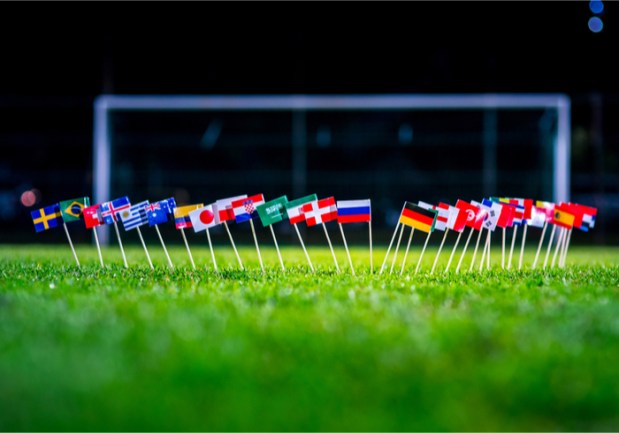World Cup Highlights Growth Of Contactless Payments In Russia

Contactless payments scored big at the FIFA World Cup in Russia, with 50 percent of Visa purchases in tournament venues utilizing contactless transactions through cards, mobile devices and wearables. The popular sports event enabled Visa to highlight new payment technologies that save fans time, while keeping their payment credentials safe.
“Visa’s sponsorships enable us to showcase the latest in payment innovation on a global stage,” Visa Inc. Chief Marketing and Communications Officer Lynne Biggar said in an announcement. “Visa cardholder spending data during the FIFA World Cup™ illustrates the growth of contactless payments in Russia and fans’ reliance on quick and secure payments so that they can spend less time in line and more time focused on the pitch.”
On average, Visa cardholders spent 1,408 rubles — or approximately $23.00 — per transaction inside the stadiums throughout the tournament. Fans from Russia were the biggest spenders, followed by visitors from the United States and Mexico. In terms of categories, the largest average individual purchases were seen on in-stadium merchandise at 4,200 rubles — or approximately $68. The second most popular category was Fan Fest merchandise at 3,300 rubles — or approximately $53 — followed by in-stadium food and beverage at 800 rubles — approximately $13.
Overall, in-stadium transactions for 62 matches averaged 1,168 rubles, equating to approximately $19. Russian fans on average spent 1,090 rubles — approximately $18 — on in-stadium purchases throughout the event, while international guests attending the tournament spent 1,915 rubles — about $31.
In terms of individual games, Visa recorded the highest payment volume at the opening match between the host nation and Saudi Arabia at Luzhniki Stadium. During that game, fans spent more than 55 million rubles — or approximately $900,000. Russian fans outspent international visitors during that match, with 69 percent of spending by Russian citizens and 31 percent of spending by non-Russian citizens. And the game showed innovation of payments in Russia in action.
“The Russian payment industry is undergoing a dynamic transformation and has seen huge growth,” Visa Russia Country Manager Ekaterina Petelina said in the announcement. “Through our partnership with FIFA, Visa is focused on providing fans in Russia with new ways to pay, while advancing our business in market.”
In terms of stadiums, Moscow’s Luzhniki Stadium topped sports venue purchase volumes. That venue saw purchase volumes of 533 million rubles — or $8.6 million. In addition, Moscow’s Spartak Stadium saw 114 million rubles ($1.8 million). Beyond Moscow, Saint Petersburg saw 208 million rubles ($3.3 million), Samara saw 125 million rubles ($2 million), and Sochi saw 117 million rubles ($1.9 million).
Moscow also topped purchase volumes at FIFA World Cup Fan Fest watch parties, with Luzhniki marking 251 million rubles ($4 million) of spending. In addition, Saint Petersburg saw 38 million rubles ($615,000), Kazan saw 11 million rubles ($170,000), Samara saw 8.8 million rubles ($141,000) and Sochi saw 8.5 million rubles ($136,000).
On another note, Russian fans represented the top spending nation with 750 million rubles ($12 million) on their Visa cards. Beyond Russia, fans from the United States spent 188 million rubles ($3 million), and fans from Mexico spent 94 million rubles ($1.5 million).
Overall, Visa was the exclusive payment service in all stadiums where payment cards were accepted. In-stadium, fans had the ability to pay with contactless Visa credit and debit cards and mobile payment services at the more than 3,500 point-of-sale (POS) terminals and 1,000 mobile concessionaires.
